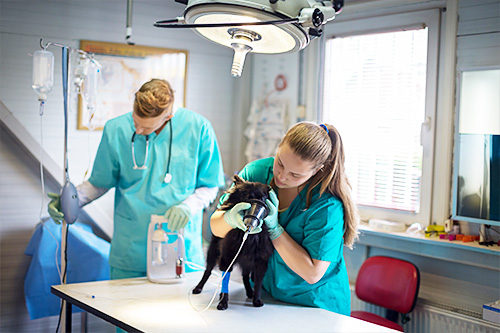
Our goal is to make our anaesthetic protocols as safe and comfortable for our patients as possible. Any patient having a procedure that requires sedation or anaesthesia has an intravenous (IV) catheter placed. This is a small tube inserted into the vein and secured in place so that medications or fluids can be administered without having to repeatedly insert needles into the patient. An IV catheter is also an important safety precaution as it allows rapid access to the blood stream, should an emergency arise. IV fluids help to keep the patient’s blood pressure stable, keep organs functioning to their full potential and prevent the pet from becoming dehydrated during surgery. Patients on gas anaesthesia (and sometimes those under heavy sedation) have an endotracheal tube placed to make sure that their airways are clear at all times, to prevent any saliva or stomach contents being inhaled into the lungs and to help deliver the correct amount of anaesthetic gas. As low body temperature can cause a drop in blood pressure and lead to a slower recovery, our patients’ temperatures are monitored closely and a special warmer is used for those that need some extra warmth. All anaesthetic drugs are tailored to the patients’ age, species and health status to deliver the safest possible protocol. Each patient under anesthetic has a dedicated technician closely monitoring their vital signs and comfort before, during, and after every procedure.
